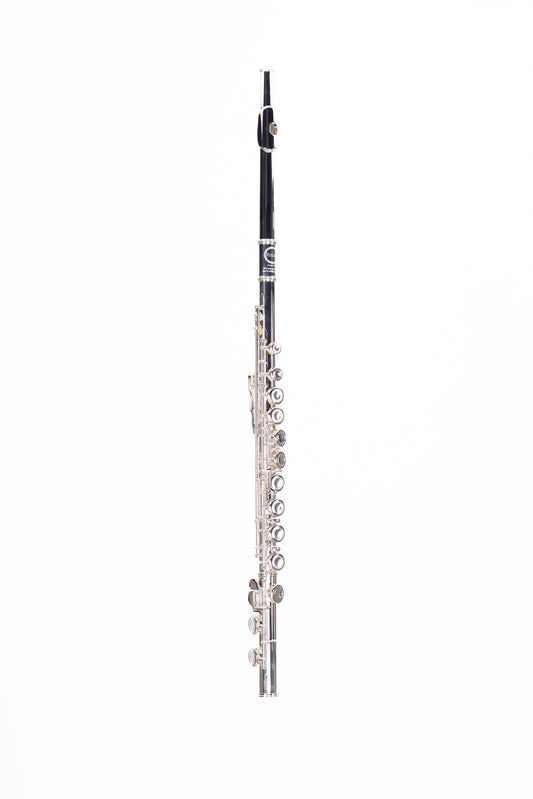
The Difference Between Tenor and Alto Saxophone: Which One Is Right for You?
Share
When it comes to choosing a saxophone, there are many options to choose from. Members of the saxophone family include: soprano, sopranino, baritone, alto, and tenor. Two of the most common options are the tenor saxophone and the alto saxophone. Both instruments are played similarly and share a lot of characteristics, however, they also have distinct differences that affect their sound, size, and role in music ensembles.
Whether you’re just starting to learn the saxophone or you're trying to decide which one to focus on, understanding the differences between these two instruments can help you make an informed decision.
At Herche, we offer both the Herche Superior Alto Saxophone X3, and The Herche Superior Bb Tenor Saxophone X3 so you have the best quality instrument no matter what size you decide to play!
In this blog post, we’ll explore the key differences between the tenor saxophone and the alto saxophone, including their sound, size, range, and general feel. By the end, you’ll have a clearer idea of which saxophone might be the right fit for you.
1. Size and Weight
One of the first differences you’ll notice between the tenor saxophone and the alto saxophone is their size and weight.
- Alto Saxophone: The alto saxophone is smaller and lighter than the tenor saxophone. It’s pitched in E♭, which makes it a mid-range instrument in the saxophone family. Typically, the alto is about 25-30 inches long and weighs around 5-6 pounds, making it a more manageable option for younger players or those with smaller hands.
- Tenor Saxophone: The tenor saxophone is larger and heavier, typically around 36 inches in length and weighing 6-8 pounds. It’s pitched in B♭, and its size makes it a bit more challenging to hold and maneuver, especially for beginners or those new to wind instruments.
If you're just starting out or you’re concerned about comfort and ease of playing, the alto saxophone may be a better fit. It’s smaller, more portable, and easier to handle for most players. The tenor saxophone, however, is often favored by more advanced students and adults because it produces a deeper, more resonant sound.
2. Sound and Tone Quality
The sound is one of the most important aspects of choosing an instrument, and the alto and tenor saxophones each offer distinct tonal qualities.
- Alto Saxophone: The alto saxophone has a brighter, sharper tone, with a clear and vibrant sound that cuts through the mix in an ensemble. It’s often used in both classical and jazz music and is known for being able to express a wide range of emotions, from playful to soulful. Its higher pitch makes it a natural choice for melodic lines that need to stand out.
- Tenor Saxophone: The tenor saxophone, on the other hand, has a warmer, deeper tone. Because it’s a larger instrument with a lower pitch, its sound is more mellow and resonant. It’s often described as smoother and richer, with a slightly huskier quality. The tenor saxophone is favored in genres like jazz and blues, where its rich tone can convey more complex emotions.
If you prefer a bright, bold sound with a bit more edge, the alto saxophone might be your go-to instrument. If you're drawn to a richer, smoother tone that feels more robust, the tenor saxophone could be the better fit.
3. Range and Pitch
Both the alto and tenor saxophones are versatile instruments, but their range and pitch are slightly different.
- Alto Saxophone: The alto saxophone has a range of about two and a half octaves, from concert B♭ to concert F#. Because it’s pitched in E♭, its sound is a major sixth below the written notes, which gives it a slightly higher pitch in comparison to the tenor saxophone.
- Tenor Saxophone: The tenor saxophone has a similar range, but its pitch is slightly lower, as it is pitched in B♭. This means that its written notes sound a major ninth lower than those of the alto saxophone, contributing to its deeper sound. The tenor saxophone’s range is also roughly two and a half octaves, but the overall sound is richer and fuller due to the lower pitch.
If you want to play more melodic, high-pitched lines or if you prefer a more bright, cutting sound in the higher register, the alto saxophone is a great choice. However, if you enjoy playing lower, more resonant notes or want to be part of the section that adds depth to the sound, the tenor saxophone may be the better option.
4. Role in a Band or Ensemble
Both the alto and tenor saxophone play important roles in a variety of ensembles, but their roles can differ based on their size and sound.
- Alto Saxophone: In concert bands, jazz bands, and orchestras, the alto saxophone often takes the melodic lead or plays prominent harmonies. Its higher pitch makes it ideal for standing out in the mix and playing solos. The alto saxophone is typically the lead saxophone in many musical arrangements.
- Tenor Saxophone: The tenor saxophone often has a more supportive role in classical and jazz settings, although it can also shine in solos. Its lower pitch allows it to fill in harmonies and add depth to the saxophone section. In jazz bands, the tenor saxophone often provides the second voice in the ensemble, playing alongside or complementing the alto saxophone.
If you want to take on more melodic solos or be the primary voice in a saxophone section, the alto saxophone is often the first choice. If you’re interested in adding depth, complexity, and rich tone to the ensemble, the tenor saxophone is the way to go.
5. Difficulty Level and Learning Curve
Both the alto and tenor saxophone require similar basic techniques, such as mastering the reed, learning fingerings, and developing breath control. However, the larger size of the tenor saxophone can make it a bit more challenging for beginners in terms of handling and breath support.
- Alto Saxophone: As a smaller instrument, the alto saxophone is often seen as easier to handle for beginners or younger players. It’s also lighter, which makes it easier to hold for extended periods of time.
- Tenor Saxophone: The tenor saxophone, being larger and heavier, can be more challenging to manage for younger or smaller players. The larger size requires more strength and breath control, so it might take a bit more effort to play, especially when you’re just starting out.
If you’re a beginner or have limited experience with wind instruments, you might want to start with the alto saxophone for ease of handling and learning. If you’re committed to tackling a slightly larger, more powerful instrument and enjoy a richer tone, the tenor saxophone might be a good challenge to take on.
Final Thoughts: Alto or Tenor Saxophone?
Choosing between the alto saxophone and tenor saxophone ultimately comes down to personal preference. Both instruments offer unique sounds and roles in music ensembles. The alto saxophone tends to be a better fit for younger players or those who want a brighter, more versatile sound. The tenor saxophone, with its deeper, smoother tone, appeals to those who prefer a larger instrument or are looking for a more resonant sound.
Both saxophones are rewarding to play and can bring a lot of joy and musical expression into your life. Whether you're playing in a school band, a jazz ensemble, or as a soloist, learning either of these instruments will open up a world of musical possibilities.
In the end, your decision should be guided by what appeals to you most: the vibrant brightness of the alto saxophone or the warm depth of the tenor saxophone. Either way, you’ll be making an exciting choice!
What are your thoughts? Do you prefer the brighter tone of the alto or the deeper sound of the tenor? Let us know in the comments below!





